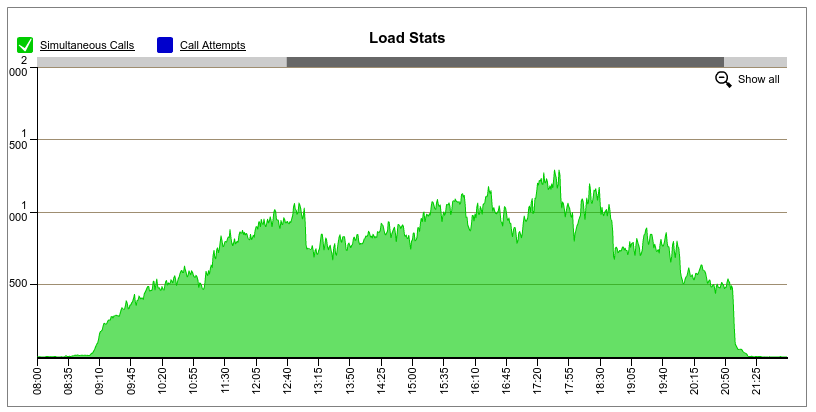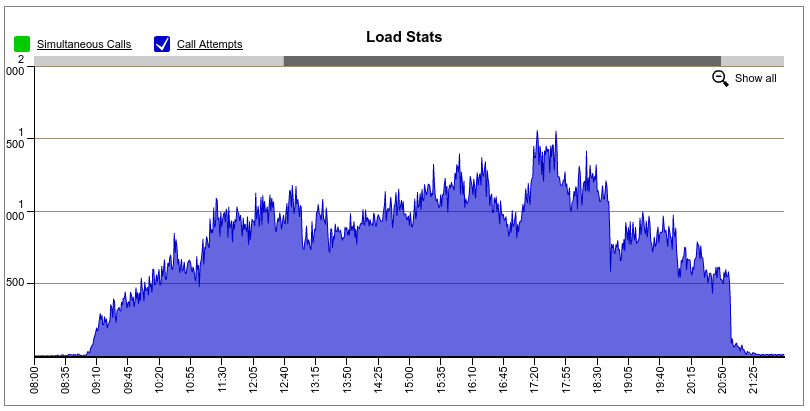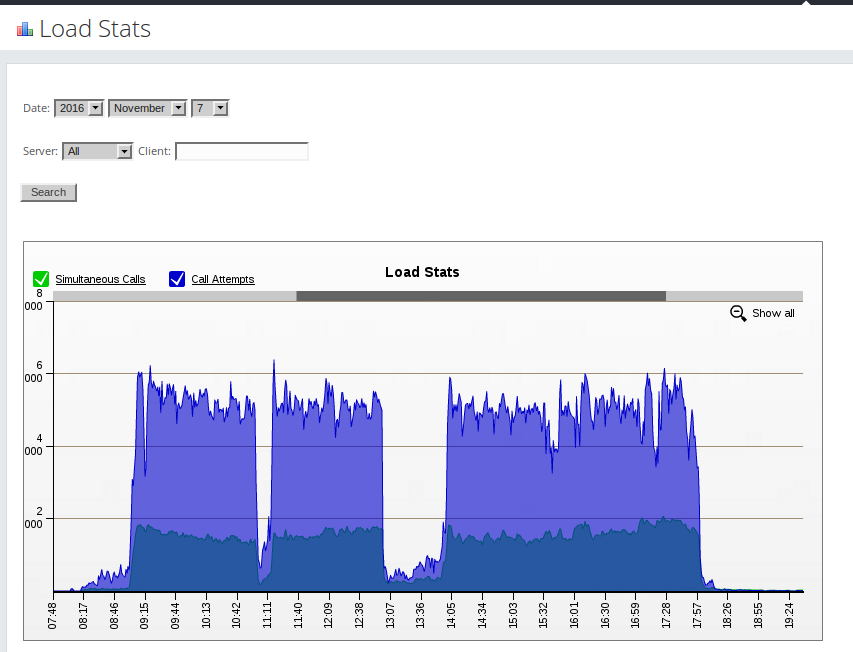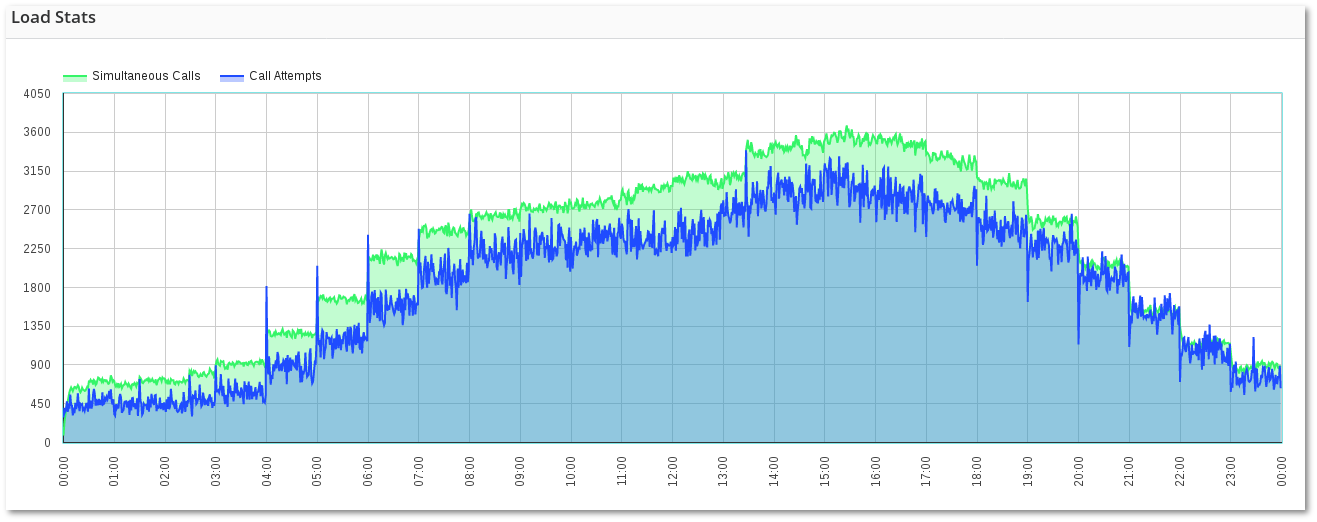Difference between revisions of "Softswitch performance"
| Line 13: | Line 13: | ||
* MOR - 1200 concurrent calls* (see: [[Softswitch_performance#Wholesale_transit_business_.231 | wholesale transit business #1]]) | * MOR - 1200 concurrent calls* (see: [[Softswitch_performance#Wholesale_transit_business_.231 | wholesale transit business #1]]) | ||
* M2 - | * M2 - 3700 concurrent calls* (see: [[Softswitch_performance#Wholesale_transit_business_.231 | wholesale transit business #4]]) | ||
We have not implemented bigger systems than above, so it is not possible to show or predict performance results if you add more servers. | We have not implemented bigger systems than above, so it is not possible to show or predict performance results if you add more servers. | ||
Revision as of 13:54, 21 June 2018
What is the maximal single server performance?
Max. performance of single server solutions (real examples):
- MOR - 500 concurrent calls*, 25 CPS (see: wholesale transit business #2)
- M2 - 2000 concurrent calls*, 100 CPS (see: wholesale transit business #3)
Once you reach limits of a single server, it is recommended to deploy a multi-server solutions.
What is the maximal multi-server performance?
- MOR - 1200 concurrent calls* (see: wholesale transit business #1)
- M2 - 3700 concurrent calls* (see: wholesale transit business #4)
We have not implemented bigger systems than above, so it is not possible to show or predict performance results if you add more servers.
Factors that influence softswitch performance
- Hardware specifications (CPU, RAM, HDD type - 5400/7200 rpm, SSD, SAS, Raid, etc.)
- Network (routers/switches)
- Providers (connectivity, quality, PDD)
- CPS (if you accept a lot of short calls at the same time (so called dialer or call center traffic), softswitch performance decreases)
- Structure of call (signalling only or signalling with media)
- Processes, running on the same time (if you generate invoices, statistics or run other processes, softswitch performance decreases)
- Additional functionality usage (if you record calls, use different IVR structures, softswitch performance decreases)
- Codec and protocol used
- Protocol and codec conversion (in case of transcoding performance decreases two times)
- Calls length (if you accept a lot of short calls at the same time (so called dialer or call center traffic), softswitch performance decreases)
- DB and GUI on same server or on the separate (if you separate DB and GUI, you can increase performance)
- SIP balancer present or not (if you use SIP balancer in front of the servers, you can increase performance)
- Business model (Calling Card, Callback and Call Center calls decreases softswitch performance)
- etc
See also: How do you select a softswitch based on concurrent calls?
Real examples
In all of below examples companies are using recommended hardware.
Wholesale transit business #1
Implementation (Kolmisoft Hosted servers are used):
- SIP balancer
- 3 Asterisk (MOR) servers
- DB/GUI server
Results: 1200 concurrent calls, up to 1500 call attempts per minute (25 CPS)
Wholesale transit business #2
Implementation - single server solution (GUI is not used almost at all, server has 24 cores).
Results: up to 500 concurrent calls, up to 1500 call attempts per minute (25 CPS)
Wholesale transit business #3
Server details: CPU: Intel(R) Xeon(R) CPU E5-2630 v4 @ 2.20GHz RAM: 32 GB HDD
Results: up to 2079 concurrent calls, 6000 call attempts per minute (~100 CPS)
Wholesale transit business #4
Implementation (Kolmisoft Hosted servers are used):
- SIP balancer
- 5 Freeswitch (M2) servers
- DB/GUI server
Results: 3700 concurrent calls, up to 3500 call attempts per minute.
Calling Cards and Retail business #1
Implementation:
- 1 Asterisk (MOR) + DB + GUI server
Note: main business - calling cards and retail
Results: up to 100 concurrent calls, up to 800 call attempts per minute (13 CPS)








